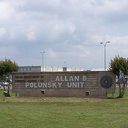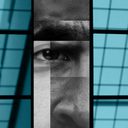
A July 2024 report from the Texas Defender Service (TDS), An Unfulfilled Promise: Assessing the Efficacy of 11.073, the first-ever comprehensive review of Texas’ junk science writ, revealed that the “law systematically fails to provide relief to innocent people convicted based on false forensic evidence.” In 2013, the Texas Legislature passed a first-of-its-kind law, Texas Code of Criminal Procedure Article 11.073, creating a procedural pathway for convicted individuals to seek new trials if they can show the forensic science used to achieve their conviction was flawed, and that without this flawed evidence, they likely would not have been convicted. In a review of 74 cases filed under Article 11.073 between September 2013 and December 2023, TDS determined that the statute “is not operating as the Texas Legislature intended.” The report holds that “the Texas Court of Criminal Appeals’ (CCA) implementation of the statute has shown inconsistency in application, a disregard for discredited scientific methods, a heavy investigative burden for people seeking relief (especially people without counsel), and a striking absence of relief in capital cases — meaning that potentially innocent people will be executed.”
Of the 74 cases filed during this period, just 15 (20%) applicants received relief from the courts. Individuals sentenced to death constitute approximately a third of all filings under Article 11.073, but the courts have not granted relief to any death-sentenced prisoners under this statute. Individuals who are not death-sentenced have received relief in 15 of 49 cases (31%). Of the 25 applications filed by individuals on death row, 18 were dismissed or denied by the CCA without review of the underlying claims and 64% of applicants “were dismissed or denied by an order no longer than a page and with no substantive discussion.”
TDS’ report also found that the CCA has applied a higher standard of proof than originally intended by law, requiring prisoners to prove their innocence in order to receive relief. This bar is much higher, and harder to reach, than proving that one’s conviction was based on unreliable science by “the preponderance of evidence.” In 73% of the cases in which the CCA granted relief to prisoners, the individual seeking relief “affirmatively proved their actual innocence.” Of the 15 individuals who have been granted relief under Article 11.073, “10 were either simultaneously granted relief on an actual innocence claim or presented evidence indicative of actual innocence.” TDS reported that “people seeking relief under 11.073 might need to go beyond proving the State’s reliance on flawed science — they might need to provide evidence affirmatively showing innocence… As a result of the CCA’s interpretation, 11.073 does not do enough to consistently protect all people who have been convicted on false and discredited scientific evidence.”
The report also discovered that the court rejected at least 38% of appeals for procedural reasons. In some instances, the court ruled that the new evidence could have been found during a previous appeal or that it would not have influenced the jury’s verdict. As a result, individuals convicted based on “junk” science claims, including those on death row, are left without any substantive evaluation of their cases and have no remaining avenues for relief. TDS found that the CCA “largely restricts” relief to cases involving new DNA evidence, despite the fact that a majority of wrongful convictions do not involve DNA evidence. Although DNA claims accounted for just 43% of 11.073 applications, 73% of those granted relief were based on DNA claims.
Among the death row prisoners who have been denied relief under Article 11.073 is Robert Roberson. Mr. Roberson has spent more than 20 years on death row after being convicted of causing the death of his two-year-old daughter, Nikki, despite his steadfast maintenance of innocence. In 2003, at the time of Mr. Roberson’s trial, there was a medical consensus that a child with a specific set of internal conditions, all of which were present in Nikki’s case, must have been shaken or struck with a blunt object. Mr. Roberson brought Nikki to the hospital and was unable to explain adequately his daughter’s condition. At the hospital, staff were unaware that Mr. Roberson has autism and misconstrued his demeanor as a lack of concern for his daughter. Following the hypothesis of one physician that Nikki’s death was the result of ‘Shaken Baby Syndrome (SBS)’, law enforcement arrested Mr. Roberson prior to the performance of an autopsy.
At trial, State medical experts testified that violent shaking or blunt force trauma were the only explanations for the cause of Nikki’s death, dismissing any prior health issues Nikki had experienced. Nikki, who was chronically ill since birth, suffered from high fever and undiagnosed pneumonia ahead of her death. Mr. Roberson took Nikki to both the emergency room and her pediatrician in the days leading up to her death, but she was treated with medication that today’s science knows is not suitable for children her age, as it suppresses the respiratory system. In 2016, Mr. Roberson faced a scheduled execution date for his daughter’s death, but the CCA granted him a stay of execution to allow his trial court to hear both an actual innocence claim and a challenge to “Shaken Baby Syndrome” under Article 11.073. At this time, counsel for Mr. Roberson identified changes in the scientific understanding of SBS and presented information at a hearing “showing Nikki’s condition could be explained entirely by her illness and the dangerous medications she had been prescribed rather than abuse.” Despite the evidence presented at the evidentiary hearing supporting Mr. Roberson’s innocence, the trial court recommended denying him relief under 11.073 and the CCA agreed with the lower court’s findings in 2023. According to TDS, “neither the trial court nor the CCA acknowledge the significant scientific advancements and the exculpatory evidence presented.”
On July 1, 2024, a Texas court set an execution date of October 17, 2024, for Mr. Roberson, despite the new scientific and medical evidence debunking the theory of SBS. According to a writ of habeas corpus and a motion for a stay of execution, filed on August 1, 2024, Nikki died of “severe viral and bacterial pneumonia that progressed to sepsis and septic shock.” Three medical experts, from a range of medical specialties, reviewed records associated with Mr. Roberson’s case and determined that Nikki did not die from abuse, but rather from a fatal lung infection. Gretchen Sween, an attorney for Mr. Roberson said that “the evidence in Robert Roberson’s case proves that his daughter Nikki died of natural and accidental causes and that no crime occurred.” Ms. Sween added that “all across the country, courts are exonerating convicted parents and caregivers or recommending new trials based on the recognition that the shaken baby hypothesis has been discredited by contemporary scientific inquiry. In Mr. Roberson’s case, the courts must step in to prevent the execution of an innocent man before it is too late.”
Since 1992, at least 32 parents and caregivers in 18 states have been exonerated after being wrongfully convicted under the shaken baby hypothesis, according to the National Registry of Exonerations. Mr. Roberson is at risk of being the first person executed in the United States under the now-debunked shaken baby hypothesis.
Robert Roberson’s Attorneys Ask Courts to Reopen His Actual Innocence Case Base Oct. 17 Execution, Innocence Project, August 1, 2024; An Unfulfilled Promise: Assessing the Efficacy of Article 11.073, Texas Defender Service, July 29, 2024; Kayla Guo, When the science crumbles, Texas law says a conviction could, too. That rarely happens., The Texas Tribune, July 29, 2024.



